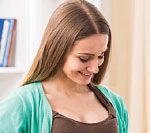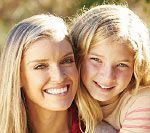TCM Theory: Mechnism of Chinese Massage
Mechnism of Chinese Massage
- The general
- Regulating Yin and Yang
- Relax muscles and tendons and dredge the channels and collaterals
- Restore and treat injured soft tissues and reduce dislocated joints
- Trip adhesion, dredge stenosis
- The tonifying and purging function of massage manipulations
The General
Massage is a Chinese medical therapy with various manipulations applied to certain parts of the human body (including specified passive movement of the limbs) to prevent diseases. One factor is the quality of the manipulation and the other factor is the exceptional effect of the manipulated locations, channels and collaterals, and points. Therefore, generally speaking, when the curative effect of massage is working upon one specified location of the body through manipulations, the direct effect of its stress can act locally to promote blood circulation and remove blood stasis, restore and treat injured soft tissues, correct deformity and abnormal location of bones and soft tissues in anatomic site. On the other hand, dynamic wave signals of the manipulation can reflexively influence the physiological function and pathological state of the body fluid, Qi and blood, ying, wei, cerebrospine, viscera, mind and emotion, etc. through the conducting channels points and collaterals viscera so as to effect a recuperative medical function over other part of the body or whole body. The main acting principles are as follows:
1. Regulating Yin and Yang
Yin and yang are a pair of concepts in the ancient Chinese philosophy, representing respectively one part of a thing “exposed to the sun”, and the remaining part “facing the opposite direction of the sun, ” the former being yang and the latter yin. Later, this concept was extended to explain any two opposite sides or phenomena that nourish each other, supplement each other or wane and wax mutually (one wanes, the other waxes or vice versa) and transform to each other, which gradually developed into yin-yang theory. As early as more than two thousand years ago, yin-yang theory was introduced into TCM and became an important part of its basic theory, explaining the organic structure, the physiological function and the pathologic change of the human body and guiding clinical diagnosis and treatment.
According to yin-yang theory, every part of the human body is consisted of two opposite but unified materials or functions, i.e. yin and yang. So far as the structure of the human body is concerned, the exterior is yang whereas the interior is yin; the upper part is yang and the lower part is yin; the back is yang and the abdomen yin. So far as the zang and fu organs are concerned, the six fu-organs are yang and the five zang-organs yin. So far as Qi and blood are concerned, Qi is yang and blood yin. In terms of function and material, function is yang and material yin. In terms of functioning status, excitement is yang and depression yin; activity is yang and stasis yin; growth is yang and decline yin.
As for the functional activity of Qi, upward is yang and downward yin; outward is yang while inward yin, etc. If yin and yang are in dynamic equilibrium, life activity will remain in a healthy state of balance But if the balance of yin and yang is broken due to the six pathogenic factors, seven emotions or traumatic injuries and so on, there can be such pathogenic changes as an excess of yang causing heat syndrome and an excess of yin cold one; an excess of yin leading to disorder of yang, excess of yang disorder of yin; insufficiency of yang causing exterior cold syndrome, deficiency of yin interior heat one, etc. Clinical syndromes inclined to yin, yang, exterior, interior, cold, heat, deficiency, excess of different degrees and properties may be present.
Massage treatment follows the principle described in The Yellow Emperor’s Internal Classic as “examining carefully
the status of yin and yang so as to get them in balance.” That is to say, massagists should, according to different diagnosis results, use different manipulations which may be mild, powerful, slow, quick, vigorous or soft in order to treat the illness, of deficiency type by using tonifying methods, excess syndromes with the purgative and reductive manipulation, heat syndromes with methods of cold or cool nature, cold syndromes with hot-natured methods, stasis by dissipation, stagnation and accumulation of pathogen by diffusion methods, exopathogens in the superficies of the body by dispersion, and half exterior and half interior syndromes by mediation, thus changing the relative excessiveness of yin and yang, regulating their relationship and restoring their balance, eliminating pathogen and recovering the vital-Qi.
The deficiency of yin, deficiency of yang or deficiency of both yin and yang of the corresponding viscera can be rectified when using light, soft and slow pushing with one-finger meditation, or using kneading and rubbing therapies by stimulating the specified Front-Mu points, Shu points and other adjunct points. The relatively strong or powerful manipulations such as rubbing, scrubbing or squeezing and pressing therapies can expel pathogenic factors and reduce excessiveness.
For the diseases of cold, deficiency and yin types, relatively slow and soft rhythmical manipulations can be used for comparatively a longer time to make the patients feel warmth and heat, to promote Qi circulation by warming yang. Furthermore, scrubbing mildly at the waist can nourish yin, remove fire, clear away deficiency heat from the blood. Pushing mildly of Du channel from Dazhui to sacrum or coccyx can clear away excessive heat from Qi system while pushing forcefully along the same route can cool the blood and clear away excessive heat from the blood system.
In TCM, soft tissues and joints include fascia, muscle, muscle tendon, tendon sheath, ligament, joint capsule, synovium, fibrous ring of verterbral disc, articular cartilage disc and other soft tissues of the body. Any direct trauma, indirect trauma and long-term strain can bring a series of pathogenic changes. Their injuries can be local bruise, muscle sprain, fibrous rupture, tendon avulsion, slipped tendon, ligament rupture, laceration of joint capsule, semi-dislocation of bones, joint dislocation, chondroclasis and joint or soft tissue strain, and so on. Massage has quite a good curative effect on all the above-mentioned illnesses, and its functioning principles are as follows:
2. Relax muscles and tendons and dredge the channels and collaterals
When there is trauma, signals of spasm and pain can be sent off by the attaching points of muscles, fasciae, tendon, joint capsules, etc. to alert the concerned tissues through the reflexion of the nerve. Muscular contraction, tension and even spasm are the very reflexion of this alert status. This is a protective reaction of human body, aiming at reducing the activities of the limbs and avoiding the tracting stimulation to the injured part so as to relieve pain. But if no timely treatment is given or the treatment is not thorough-going, adhesion, fibrosis or cicatrization of the injured tissues will occur and even damaging impulsion will be produced to increase the pain, muscular contraction or tension, and subsequently secondary pain foci and malignant pain rings will appear in the surrounding tissues. Both the primary and secondary foci can stimulate and compress the terminals of nerves and the small nutrient blood vessels, resulting in partial obstruction in blood circulation and metabolism.
Massage is a very effective way to remove muscular tension and spasm, in which it can not only relax the muscles but also get rid of the cause that leads to the muscular tension. The mechanism of massage is consisted of three parts: firstly, it can locally promote blood circulation and raise body temperature; secondly, it can increase the threshold value of pain of tissues with appropriate stimulation; thirdly, it can extend the tense and spasmodic muscles so that the illness can be eliminated.
3. Restore and treat injured soft tissues and reduce dislocated joints
Massage manipulations of tracting, traction and counter-traction, rotating and pulling or flicking-poking can reduce joint dislocation, join semiluxation, relocate the sprained soft tissue to normal position, restore slipped tendon, re-situate herniation of pulpiform nucleus, take out the embedded synovium, eliminate the pathogenic state of muscle spasm and local pain, promoting the recovery and reconstruction of the injured soft tissues.
4. Trip adhesion, dredge stenosis
When the soft tissues are injured, adhesion of the muscle, tendon, ligament, joint capsule, and others, as well as local bleeding and organization hematoma may cause a long-term pain and hinder the joint activities. Treatment, such as flicking-poking, joint lift-dragging, traction and counter-traction, rotating and pulling, can remove adhesion and facilitate the activity of joints.
In the body parts which have fiber-sheathed vessels of bones such as the tendon vessel of the long head of biceps, tendon vessels and tendon sheath of lexor hallucis longus and flexor digitorum at the processus styloideus of radius, there may, due to hyperosteogeny, chronic strain or attack of wind, cold and dampness, occur with tumefaction and hyperemia of the tendon and tendon sheath or exudation inside the sheath and then fibrosis, which will thicken the wall of the sheath, fetter the tendon inside the sheath and affect the extention-flexion movement of the joints. If it is not a serious case, the sheath will become constrictive, and snapping sounds will be heard while moving. If the case is a serious one, the local adhesion will become indurative, and the joints will lose its extension-flexion function. For tendons and sheaths with pathologic changes, local massage by plucking and continuous rhythmic finger-kneading or rolling in coordination with rolling-pulling, traction and counter-traction and other manipulations of passive movement of the joint can subdue swelling, stop pain, strip adhesion, enlarge constriction and relieve the snapping sound to restore the tendon to its normal sliding function in the sheath.
5. The tonifying and purging function of massage manipulations
Massage treatment takes manipulation as the most important means. In the course of diagnosis and treatment, according to the deficiency and excess of the patient’s condition of constitution and illness, the massagists can choose such manipulations as tonifying, purging, mediating, exciting or restraining, all depending on whether the manipulations can be skillfully applied. A comprehensive survey of the clinical experience of the masters of both ancient and modern Chinese massage shows that the tonifying and purging effect of the manipulation is directly related with factors such as whether using a mild or powerful manipulation, whether with vigorous or soft performance, or whether with a quick or slow frequency, or what direction the force takes and how much time it lasts.
Generally speaking, the tonifying manipulation refers to the manual stimulation with less strength, soft performance and slow frequency along the route of channels and collaterals (anti-clockwise manipulation at the abdominal region), which excites, stimulates and strengthens the human body.
On the contrary, more powerful, vigorous but soft manual stimulations with quick frequency moving in the opposite direction of the channels and collaterals (clockwise manipulation at the abdominal region) for a short time are known as purging manipulation which has the function of restraining, tranquilizing the body and directly expelling pathogen. Besides, to-and-fro stimulations performed with moderate strength, frequency and time along the channels and collaterals are known as uniform reinforcing-reducing method, which is also called mediation method used frequently for regulating yin and yang and enhancing the function of the related internal organs.
But, all these manipulations mentioned above concerning tonifying and purging are relative and changeable in different clinical practice. Therefore, flexible choice and differentiation should be made in accordance with the specific conditions. Take the tonifying method for example, it may be divided into two kinds, namely, slow tonifying and quick tonifying. For quick tonifying, strong manipulation is used to stimulate the points along the regular channels while slow tonifying performed gently and slowly for a longer time along the related channels. The purging method consists of quick purging and slow purging. For quick purging, deep finger-nail-pressing is used with more strength in reverse direction of channel while slow purging is performed with less strength.
Chinese massage, as one clinical branch of TCM, demands rich knowledge both in theory and practice. Professional massage doctors should have not only the knowledge of Western medicine, a good command of TCM diagnosis and treatment methods form upon an overall analysis of symptoms and signs, but also a good physical constitution and proficient manipulation techniques for clinical massage practice. So, the students in the massage line of TCM colleges in China must systematically study Classics on Massage, Theory on Massage Exercise, Manipula:ion of Massage, Basis of Massage, Massage Therapeutics, Children Massotherapy and other specialized courses. Moreover, they have to carry on strict physical exercise and technical training in manipulations.
In the study of basic medical courses, emphasis should be paid on the study of TCM theory as yin-yang, the five elements, ying-wei-qi-xue, channels and collaterals, viscera, causes of illnesses, four diagnostic methods and eight-principal-syndrome diagnosis and treatment based on overall analysis of symptoms and signs and on the study of anatomy, physiology, pathophysiology, pathoanatomy and physical diagnosis in Western medicine. Also required is the knowledge of the flowing courses of the fourteen regular channels and their relationship to the internal organs, the commonly used acupoints on the fourteen regular channels, the location of extra-ordinary points, the special points for massage, point selection, indications, human histology, motion function, etc.
In term of professional technical training, the first thing is to carry on such training step by step. During the training, attention should be paid not only to such things as strength, endurance, pliability and toughness but also to the psychological preparation, i. e., the strong will power and quality to bear hardships and strenuous work so as to get physically and psycologically prepared for the long-term professional massage work. Furthermore, stress should also be laid upon the serious study of the “movement structure” and “technical essentials” of various manipulations, and strict following-up of the training methods and steps, and assiduous and persevering practice of manipulating technique in its proper sequence so as to succeed in the three training phases as rice-bag training, human-body training and manipulating training for treating common diseases.
In a word, for those with rich knowledge of medical science, it is easy to succeed in practicing massage within a short time if there is a conscientious training, but difficult to reach a perfect command of the difficult manipulations such as single-finger massage, and rolling therapy without long-term training and practice.
Please browse the following contents for further study:
OPENING HOURS
| Week Days | 8:00 – 5:00 |
| Saturday | 9:00 – 5:00 |
| Sunday | 11:00 – 4:00 |




